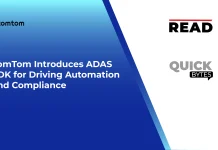The field of medical technology is witnessing remarkable advancements, giving rise to cutting-edge devices designed to detect various diseases. These groundbreaking technologies are rapidly gaining prominence across major industries due to their diverse applications. But what exactly is digital PCR and how does it work? Let’s dive in!
What is Digital PCR?
Digital PCR, also known as digital polymerase chain reaction (dPCR), is a revolutionary method for accurately quantifying nucleic acids. Its exceptional sensitivity and specificity have contributed to its widespread adoption worldwide. This technique, which represents the third version of PCR, allows for absolute quantification by partitioning the reaction. As a result, it has proven to be highly effective in detecting copy number variation, rare mutations, and trace amounts of DNA. Its molecular detection capabilities are incredibly sensitive and precise.
In 1992, Sykes et al. introduced the concept of digital PCR when they realized that by incorporating limiting dilution, end-point PCR, and Poisson statistics, they could achieve an absolute measurement of nucleic acid concentration.
Given the increasing prevalence of diseases like cancer and the need for precise and accurate detection and quantification, technologies like digital PCR have become crucial. They enable early-stage detection and treatment, playing a pivotal role in improving patient outcomes. The demand for such advanced technologies continues to grow as researchers and healthcare professionals strive to address these diseases at their earliest stages.
Some of the prominent companies in the digital PCR industry are Bio-Rad Laboratories, Thermo Fisher Scientific, JN Medsys, RainDance Technologies, Stilla Technologies, and many more.
Unveiling the Growth Trajectory of Digital PCR
The digital PCR market is unmistakably on an upward trajectory, marked by a substantial market size of USD 250.9 million in 2021. Extrapolating from current trends, this transformative technology is poised for significant growth, with an anticipated market value of USD 935.3 million by 2030, showcasing a robust global CAGR of 7.4%.
Notably, the PCR segment within the digital PCR market is set to experience substantial growth, fueled by the escalating demand for molecular diagnosis. This surge catapults digital PCR into a logarithmic growth phase, promising further advancements.
The COVID-19 pandemic has played a pivotal role in driving digital PCR demand. Widely employed for identifying COVID-19 infections, the establishment of dedicated facilities for pandemic diagnostics is expected to propel market expansion. The healthcare industry recognizes the versatile applications of digital PCR, extending beyond diagnostics to encompass drug and research purposes. As we navigate the evolving landscape of healthcare, the ascent of digital PCR remains a compelling trend.
Decoding Principle of Digital PCR
Digital PCR (dPCR) is a technique that quantifies nucleic acids with exceptional precision by partitioning the PCR reaction into individual compartments. Each partition undergoes amplification, generating amplicons derived from a single template. The presence or absence of the target is detected by measuring fluorescence. By transforming analog signals into digital ones, dPCR enables statistical analysis and absolute quantification of the target nucleic acid. It is highly sensitive and precise, making it suitable for detecting copy number variations, rare mutations, and trace amounts of DNA.
Looking out for this innovative technology, digital PCR is crucial in the ever-evolving landscape of healthcare and diagnostics. It plays a tremendous role in ensuring early, fast, and secure disease detection.
Several factors contribute to the exponential growth of the digital PCR market, including the rising prevalence of cancer, facilitated detection processes, and increased government-backed R&D activities. These factors collectively drive the market to new heights.
Key reasons to consider:
- Accurate Measurement: Digital PCR enables precise measurement of target nucleic acid molecules. Its consistency, sensitivity, and precision in absolute DNA quantification empower researchers to identify minute mutations and measure minor differences accurately. These advantages position dPCR favorably over conventional and alternative PCR techniques, contributing to the sustained growth of the digital PCR market.
- R&D Expansion and Collaborations: The expansion of research and development initiatives for PCR technology improvement, coupled with corporate collaboration agreements, further solidifies the foundation for accelerated growth in the digital PCR industry.
What does the Future of Digital PCR Look Like?
In the realm of drug discovery and diagnosis, the landscape has undergone a significant transformation, primarily triggered by the pandemic. This abrupt shift necessitates an ultimate solution geared toward precise detection, and digital PCR emerges as a pivotal player in the healthcare industry.
The largest share in this transformative landscape is held by hospitals and diagnostic centers, driven by the escalating demand for early and accurate disease diagnosis and treatment. This sector stands out as an opportune investment, propelled by factors such as the proliferation of dPCR products and increasing public awareness, fostering its expansion.
A comprehensive exploration of the nuances within the digital PCR industry is conducted by analysts, who meticulously delve into both primary and secondary data. Drawing insights from various secondary sources in addition to primary ones, the conclusion is clear — digital PCR represents an emerging field in healthcare with a promising future that continues to broaden.
Closing Thoughts
Digital PCR machines have emerged as a game-changing technology in the field of molecular detection and quantification. By partitioning the PCR reaction into individual compartments, dPCR offers unparalleled sensitivity, accuracy, and precision in quantifying nucleic acids. This innovative technique has revolutionized research, diagnostics, and personalized medicine by enabling the detection of copy number variations, rare mutations, and trace amounts of DNA. Its ability to transform analog signals into digital ones allows for statistical analysis and absolute quantification, providing researchers and healthcare professionals with invaluable insights into genetic variations and disease processes. With the continued advancements and applications of digital PCR, we can expect further breakthroughs in understanding and combating various diseases, ultimately leading to improved patient outcomes and personalized treatment approaches.
Browse More Posts:-
Automotive Ethernet Gateway Market
B2B Price Optimization and Management Software Market
Baby Bottles Market
Baby Play Mats Market




